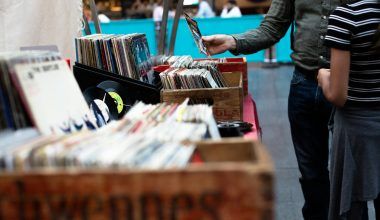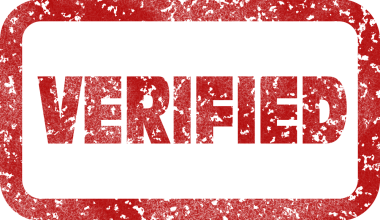In today’s digital age, making your music available worldwide is easier than ever. Sharing your track on all digital stores to get paid is not just an option but a necessity for artists aiming to thrive. Whether you’re an independent artist or part of a label, getting your music on platforms like Spotify, Apple Music, and Amazon Music is the first step toward building a successful music career. Let’s dive into how you can achieve this while ensuring maximum returns.
Why Sharing Your Track on Digital Stores Matters
Releasing your music on multiple digital platforms allows you to reach a global audience. With billions of listeners worldwide, digital stores provide you with a chance to showcase your work to a diverse group of music lovers. Furthermore, when you share your track on all digital stores to get paid, you open up various revenue streams, including royalties from streams, downloads, and even synchronization rights.
Understanding Digital Music Stores
To get started, you need to understand what digital music stores are and how they work. These platforms act as virtual storefronts for your music. They allow users to stream, download, or purchase your tracks. Popular examples include Spotify, Deezer, YouTube Music, and Tidal. Each platform has unique features, audiences, and payout systems.
Choosing a Digital Distributor
Digital distributors are your gateway to these stores. They act as middlemen, ensuring your track is uploaded, formatted correctly, and delivered to multiple platforms simultaneously. Some popular distributors include:
- TuneCore: Great for independent artists, offering a flat-fee service.
- CD Baby: Provides both distribution and royalty collection services.
- DistroKid: Known for its user-friendly interface and affordable pricing.
- Deliver my Tune: Offers a free plan for artists starting out.
Choose a distributor that fits your budget, goals, and the platforms you want to target.
Preparing Your Track for Digital Release
Before sharing your track on all digital stores to get paid, you need to ensure your music meets industry standards. Here’s a checklist to guide you:
- Audio Quality: Ensure your track is mixed and mastered professionally. Poor audio quality can deter listeners.
- Metadata: Include accurate information such as track title, artist name, genre, and release date.
- Artwork: Create an eye-catching album cover. Most platforms require a square image, at least 3000×3000 pixels.
- ISRC Code: This unique identifier is essential for tracking and collecting royalties.
- Lyrics and Credits: Provide full lyrics and acknowledge contributors.
Setting the Right Pricing and Release Strategy
To maximize your earnings, set a competitive price for downloads and consider a release strategy. For instance:
- Pre-save Campaigns: Build anticipation before your release date by encouraging fans to pre-save your track.
- Multiple Versions: Offer acoustic or remixed versions to cater to different tastes.
- Exclusive Content: Provide bonus tracks or behind-the-scenes content for premium listeners.
Promoting Your Track Post-Release
Once your track is live, promotion becomes crucial. Here are some ways to amplify your reach:
- Leverage Social Media: Share snippets, stories, and behind-the-scenes moments. Platforms like Instagram and TikTok are great for engaging fans.
- Collaborate with Influencers: Partner with creators who can share your track with their followers.
- Submit to Playlists: Getting featured on curated playlists can significantly boost your streams.
- Run Ads: Platforms like Facebook and YouTube offer targeted advertising options.
- Engage with Your Fans: Reply to comments, host live Q&A sessions, and make your fans feel valued.
Monitoring Your Earnings
Sharing your track on all digital stores to get paid means you need to keep track of your earnings. Most digital distributors provide detailed analytics, showing how many streams, downloads, and purchases your track has received. Some key metrics to monitor include:
- Monthly Listeners: Indicates how many unique users are engaging with your track.
- Revenue Breakdown: Shows earnings from different platforms and countries.
- Fan Engagement: Tracks user behavior, such as playlist additions and shares.
Exploring Additional Revenue Streams
Digital stores are not the only way to monetize your music. Expand your revenue by exploring other opportunities, such as:
- Merchandising: Sell branded merchandise alongside your music.
- Sync Licensing: License your track for use in TV shows, movies, or commercials.
- Live Performances: Use your digital presence to promote gigs and concerts.
- Crowdfunding: Platforms like Patreon allow fans to support your creative process.
Staying Updated with Industry Trends
The music industry is constantly evolving, so staying informed is vital. Subscribe to industry blogs, join forums, and network with other artists to learn about new platforms, tools, and strategies.
The Importance of Consistency
Consistency is key to building a sustainable music career. Regularly release new tracks, engage with your audience, and adapt to changing trends. Over time, your presence on digital stores will grow, leading to increased revenue and recognition.
Conclusion
Sharing your track on all digital stores to get paid is one of the most effective ways to monetize your music in today’s world. By understanding the process, choosing the right distributor, and promoting your work effectively, you can reach millions of listeners and earn from your passion. Remember, the journey doesn’t end after the release. Stay consistent, explore new opportunities, and connect with your audience to make the most of your music career.
So, what are you waiting for? Share your track on all digital stores to get paid and turn your musical dreams into reality!
For further reading, explore these related articles:
- Share Your Music on Apple Music with No Upfront Fees
- Share Your Music on Apple Music Quickly: The Ultimate Guide
- Share Your Music on Apple Music with 100% Royalties
For additional resources on music marketing and distribution, visit DMT RECORDS PRIVATE LIMITED.






